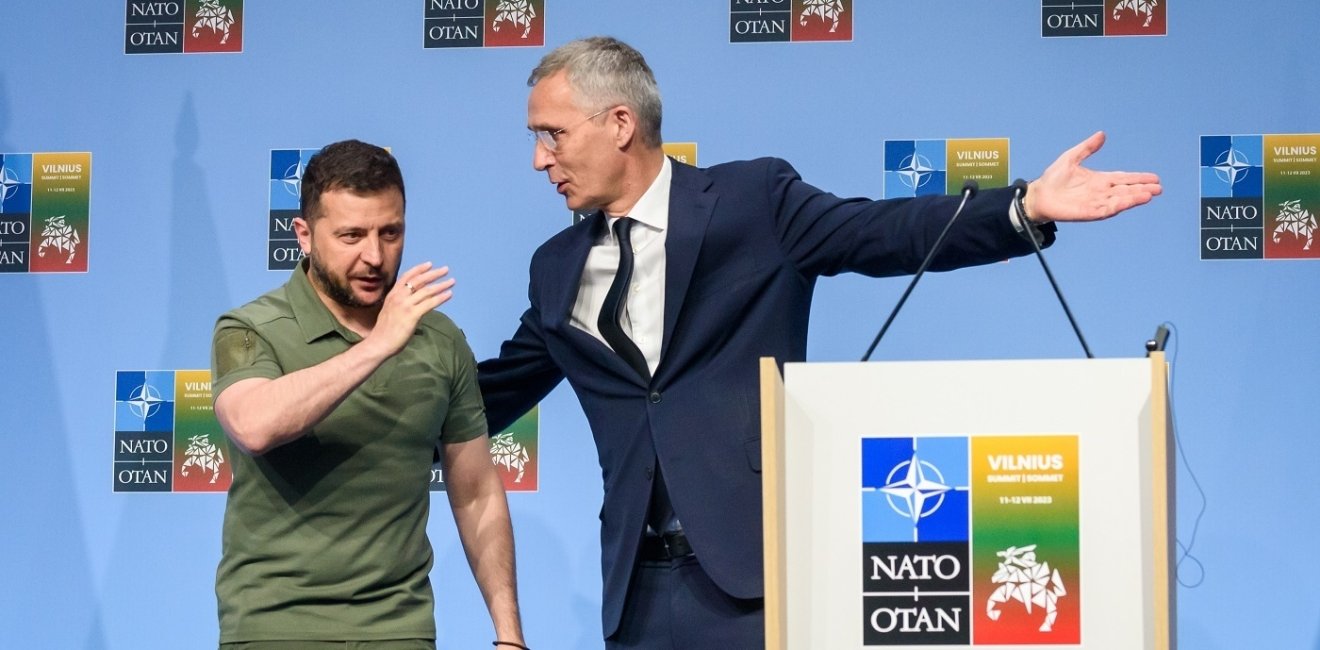
A blog of the Kennan Institute
The current situation in Europe has been called a new Cold War. Indeed, after Russia’s attack on Ukraine, the common European space was divided between antagonistic blocs, which see each other as an increasingly existential threat. NATO’s ranks are growing, as is solidarity among NATO countries. Military solutions are increasingly seen as an acceptable instrument in countries’ toolkits for managing international relations. Security has again become one of the guiding principles for structuring domestic politics. And ideologically, the pan-European conflict is characterized as democracies against autocracies. Thus there are many reasons to refer to the current European situation as a new Cold War.
Behind all those similarities, however, lie novelties as well. One of these novelties is the changing role of the middle powers in international relations. Since February 2022, states that until recently were on the periphery and in the shadow of the global core are now playing a much bigger role and enjoying a much stronger influence in international relations. The change in Ukraine’s international influence after the Russian invasion may be the most striking example of such a trend.
Usual Roles of the Great, Middle, and Small Powers
Even though all states in today’s global system are formally regarded as equal, realists have rightly pointed out the different abilities of states to pursue their interests. Indeed, the relationships among states are asymmetrical. Those powers that can influence the governments of other nations and set the general principles of international relations are regarded as great. As Gen. Mark A. Milley famously said, today there are three great powers: the United States, China, and Russia.
States that are objects of the latter states’ influence and that must accept and adapt to the international rules defined by others are considered to be small. In between those two state types are the middle powers: the political entities that are weaker than the superpowers but that can still shape international events and influence the decisions of the stronger parties.
The size of a state can be measured by (1) its GDP, population, or military spending; (2) its ability to influence international politics; and (3) its foreign policy posture. Together these three metrics determine the unequal abilities of states to influence each other politically, economically, militarily, and even culturally.
The Rise of the Middle Powers
In extended periods of peace and cooperation, the non-great states have little chance to shape the global or regional political agenda. However, when the great powers enter into antagonistic relations, the middle powers gain a footing to amplify their sovereign stature and influence relations between the states in their region or, sporadically, globally.
The current conflict among the United States, China, and Russia created an environment conducive to the growth of the middle powers’ new role. The most salient examples of it are Narendra Modi’s India, Recep Tayyip Erdoğan’s Turkey, and Andrzej Duda’s Poland. The celebratory reception of Prime Minster Modi by the United States last June demonstrated how fast India has become an influential player in the Indo-Pacific region, and how remarkably profitable that role can be. Since the start of Russia’s war against Ukraine, President Erdoğan has vastly increased Turkey’s influence with NATO, Russia, Ukraine, and the United States. Poland has also dramatically increased its geopolitical weight over the past two years while becoming the logistical manager of NATO assistance to Ukraine and a new pole of influence in the EU.
Perhaps unwillingly, the great powers are adapting to the new situation and accepting the middle powers’ vastly increased sovereign authority. This can be seen, for example, in the United States’ and Russia’s acceptance of Turkey’s new weight and the need to strike compromises with that country’s leader.
Resilient Ukraine as International Influencer
But the most striking example of a middle state with markedly greater influence is Ukraine. Paradoxically, even though Ukraine’s population and economy have declined as the war has dragged on, the country’s international status has grown to equal that of the powers that define global and regional agendas. And the United States, China, and Russia have had to adapt to it.
Consider: Ukraine has turned out to be at the center of a new, nonformalized but effective alliance—defined in defensive, political, and economic terms—that supports its efforts in defense of its people and statehood. Ukraine received EU candidate status in June 2022, a goal that seemed out of reach even in January 2022. Kyiv is exhibiting a growing influence on the NATO and G7 agendas. Ukraine is in dialogue not only with the West but also with the global south. In the war with Russia, Ukraine has not just American and European support but also the sympathies of most of the peoples around the world (see data for 2022 and 2023).
Even though Ukraine’s new international influence has systemic features, it is also undeniably connected to the personality of President Volodymyr Zelensky. From a middling president of COVID-era Ukraine he has become an inspiring and globally-admired leader of Ukraine’s anti-Russian resistance. But more than that, he has turned into a skillful manager of the middle state’s global influence. Ukraine’s new status in the global system can be attributed not only to Zelensky’s personal omnipresence at major political meetings and social gatherings but also thanks to Kyiv's skillful diplomacy vis-à-vis theU.S., EU, or G7 leadership. Zelensky’s role was central to the profound changes that have occurred in the long-standing policies toward Russia of such states as Germany, Japan, and Italy.
Such middle-state behavior—whether as institutionalized policy or personal conduct—sooner or later can irritate the great powers’ leadership. For example, Zelensky’s pushy style has sparked some negative reactions on the part of the great powers’ leaders, as during the NATO summit in Vilnius. But even the irritation can bring its results and deliver the Western support necessary for Ukraine’s defense.
It is probably correct to say that global politics was and is still unfolding in the shadow of Ukraine. That is because Ukraine has demonstrated unexpected resilience in the face of the war with Russia, which is still regarded as a great power. Kyiv has ridden the wave—the “ninth wave” of the international storm—and laid down a kind of new model of behavior for medium-sized states. The question remains: how long can it stay afloat?
What Comes after the Storm?
The effect of resilient Ukraine—or of the middle powers in general—on international relations is most likely a result of the global political order surviving the storm. The political tempest that has affected the world may end in the future, with the middle powers returning to their customary peripheral position. The great powers—those that will survive the current geopolitical shift—will demand renewed acknowledgment of their supremacy from the upstart middles. But history is happening right now, redefining greatness, smallness, and the distribution of roles and status in the interstate system. And the experience gained from the current change in asymmetrical relations among states may help redefine the rules of greatness for the future international order.
The opinions expressed in this article are those solely of the author and do not reflect the views of the Kennan Institute.
Author


Kennan Institute
After more than 50 years as a vital part of the Wilson Center legacy, the Kennan Institute has become an independent think tank. You can find the current website for the Kennan Institute at kennaninstitute.org. Please look for future announcements about partnership activities between the Wilson Center and the Kennan Institute at Wilson Center Press Room. The Kennan Institute is the premier US center for advanced research on Eurasia and the oldest and largest regional program at the Woodrow Wilson International Center for Scholars. The Kennan Institute is committed to improving American understanding of Russia, Ukraine, Central Asia, the South Caucasus, and the surrounding region through research and exchange. Read more

Explore More in Focus Ukraine
Browse Focus Ukraine
Talking to the Dead to Heal the Living

Ukrainian Issue in Polish Elections


